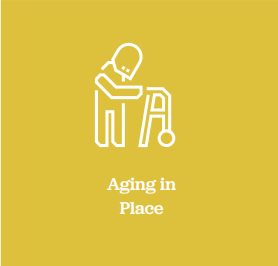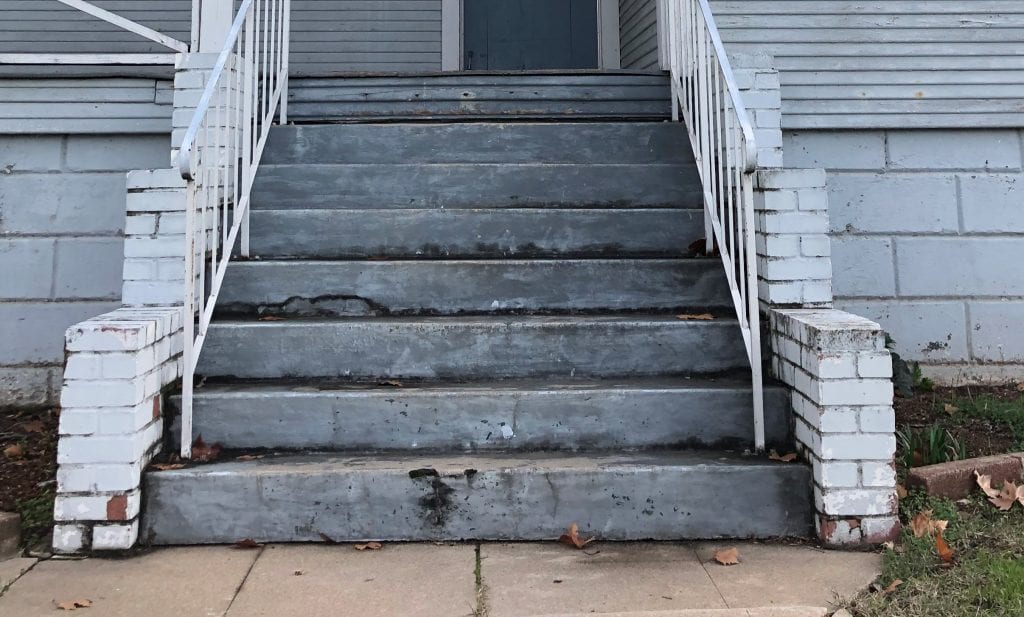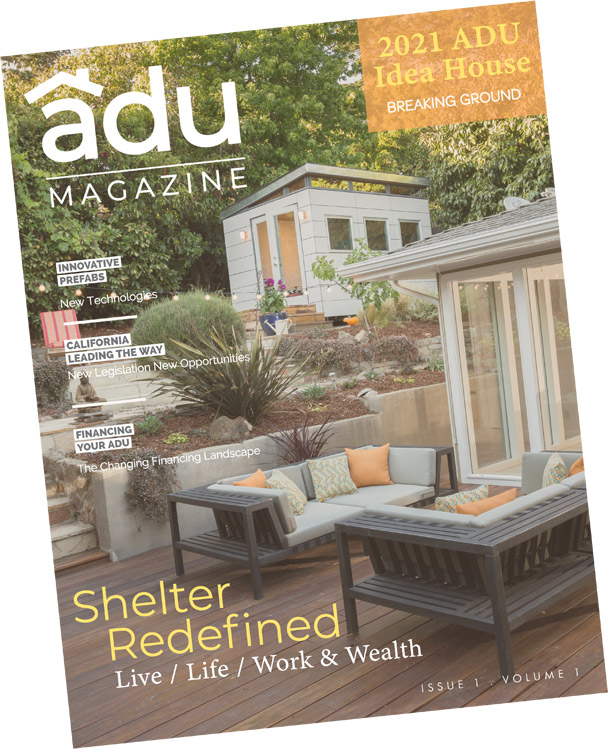
UNIVERSAL DESIGN Aging In Place
Aging in Place is not a new concept. Still, home modifications supporting our family members and friends who want to live safely and independently in their homes as they age is becoming a more important consideration as the population grows older here in America.
Aging in Place is a key focus and theme for ADU Magazine and something we specifically worked to incorporate into the 2021 ADU Idea House.
With individuals living longer and being more active into their older years, some estimates project the United States to have a staggering 111 million people over age 65 by the year 2030. That could represent roughly 30% of the nation’s projected population.
People tend to want to live in their homes even as they get older. The comfort, memories, and independence of living in their own residence are all things that motivate us to remain where we are comfortable.
Surveys show that over 90% of all seniors want to stay in their own homes as they age as long as possible. We all want to remain independent.

AGING-IN-PLACE / UNIVERSAL DESIGN
The National Association of Home Builders defines Aging in Place as “The ability to live in one’s own home and community safely, independently, and comfortably, regardless of age, income, or ability level.”
However, when we get older, comfort, emotionally and mentally, can often be quite different from the physical comfort and limitations imposed on us by our homes. A dwelling that was once well suited to you in your younger days is not necessarily safe and conducive to aging gracefully as you turn older.
The solution to this? Doing modifications, renovation and construction that empowers each of us to stay in the living spaces we love by turning our residences into “lifelong homes.”
The industry is referring to new construction efforts that seek to create lifelong homes as Universal Design. Universal Design is the development of products and living environments that are usable by all people, to the greatest extent possible throughout their entire lives. The intent of the universal concept is to enhance life for everyone by making more housing usable by more groups of people with little or no additional cost.
For aging individuals, beyond lifestyle changes, the primary focus with many older homes ranges from simple do-it-yourself fixes and the incorporation of new home products or design elements to undertaking renovation and construction improvements that make your home safe and more functional.
Independence in your living space can wane when upgrades aren’t made to your home in response to strength, mobility, and lifestyle due to physical or health changes as we get older.
With that said, existing homes need to be improved for better accessibility, safety, and comfort for an aging population. Currently, based on projections, we do not have enough care facilities for aging. The interest in care facility options is also not ideal for many individuals, as the preference to remain at home is high. Additionally, the cost of private nursing facilities ranges around $80,000 on average annually while housekeepers and assisted adult care services can cost just a fraction of that amount.

You may be wondering why we choose The Rail House as the 2021 ADU Idea House and decided to devote such considerable time and investment as a showpiece.
One of the key reasons for selecting the location was specifically becase the primary residence represented an excellent example of a home that would be ideal for renovation and modification with Aging in Place considerations. While the house is older, it had a limited renovation in the late 1970s. With the median age of owner-occupied homes here in the United States currently at 38 years, this residence reflects many aspects of older homes that owners and aging individuals confront daily.
The house has nearly all the notable Aging in Place concerns one might run into with an older dwelling: numerous stair and trip and fall hazards, smaller hallways and doorways, difficult cabinet placement, lack of turning space, dim lighting, poorly laid out bathrooms and essentially no easily accessible interior switches and hardware, etc.
One of the key goals in its renovation and transformation was to illustrate real-world physical and viewable examples of how modifications and improvements can be undertaken to address Aging in Place. One identical to the challenges and issues facing a vast majority of older homeowners or those with aging residences.
There are many great resources for individuals looking to upgrade their homes that can be found through AARP and NAHB. There is even a checklist for those looking to see what items in their home would need to be upgraded for aging. But there are fewer real-world representations that are accessible for physical viewing.
Generally speaking, the best way to ease into aging is making these changes early; moving is expensive, and doing these upgrades later may not be viable if you are retired and on a fixed budget.
With this in mind, we specifically certified one of our staff and then utilized a Certified Aging in Place Specialist (CAPS) and worked to follow the suggestions in AARP’s HomeFit Guide for Aging in Place when designing and renovating the home. Going beyond the superficial, designers and architects even worked for us to address aspects of the house with innovative approaches, products, and technology to show what is not only possible in the home but achievable to individuals in their own residence.

The Rail House, with its interesting layout and street presence, had several issues when trying to make it appropriate for Aging in Place.
What immediately comes to mind is that the home has an old-fashioned city like elevated streetscape presence clearly visible from both the sidewalk and retaining wall. Because the house is 110 years old, we believe this was initially done in 1910 to avoid the floods and rain impact that had been so prevalent at the time. Entry from both the front and back required entrance via numerous steps like many older residences – all representing serious trip and fall hazards. Even the landscaping and outdoor space represented potential issues for aging owners. As an added consideration, the home’s original central stairway, which connected it to the basement, had also long ago been closed over -requiring access from outside through a short basement doorway and awkward cement steps.
As with most older homes, it didn’t have hallways; it is essentially a connection of rooms moving from one to another. Doorways within the dwelling were narrow and it possessed limited closet space (typical to many older homes) and small unfriendly bathroom layouts. The kitchen layout was regretfully uncharming and lacked functionality and access for aging occupants.
A brief look at the varied Aging in Place Guides quickly reflected how the residence failed in almost every checklist aspect. So not only was it in need of a serious renovation, it required a new approach to the Aging in Place consideration of its future residents.
To make this home Aging in Place appropriate, significant design work was done. Every living space within the residence was looked at with consideration of possible modifications and improvements for the aging.
The size of doorways was changed, turn spacing developed, bathroom layouts reconfigured and modernized, lighting increased, and access modified for the safety and comfort appropriate to an aging household. Efforts extended beyond more basic layout to considerations of width between counters and island, nonslip tile, dual handrails, aging friendly appliances with appropriate heights, improved cabinet arrangement/access, user-friendly room hardware, technology products, and much more. An affordable lift elevator option was even incorporated to show what is possible.
The Rail House is now a living example of what can be done. It also serves as a platform for providing information and resources to individuals that wish to make their residence a “lifelong home.”






